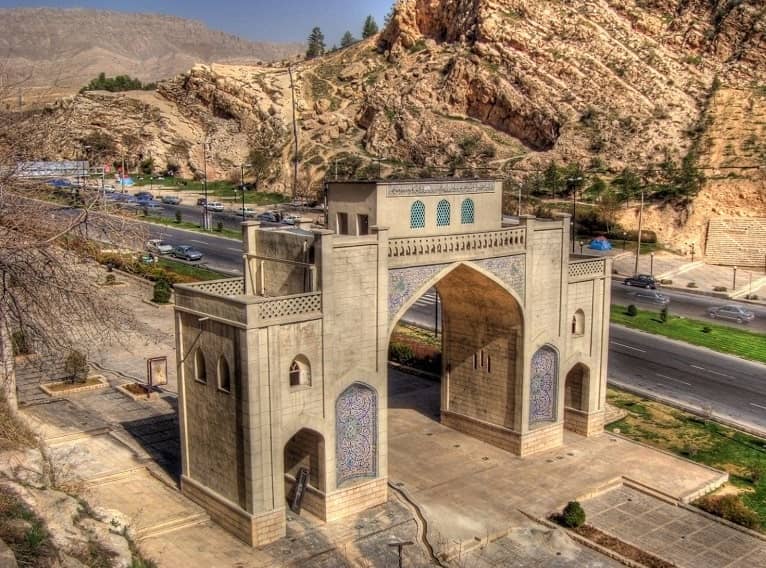Quran Gate Introduction
On the way from Isfahan to Shiraz, in the north of the city, between the mountains of Baba Koohi and Chehel Magham, there is a historic building that was once the entrance gate to Shiraz. Quran Gate, with its unique Perso-Islamic architecture, as the symbolic gateway of the city, has found a global image in which the tomb of Khajavi Kermani accompanies it in a park nearby.
Quran Gate History
This gate was originally built during the time of Az-Dawla Dailami, and a Quran was placed in it so that travelers could be blessed by passing under it. During the Zand period, Karim Khan Zand rebuilt this gate and added a room above it. He put two volumes of the great exquisite Qur’an in the Thuluth Calligraphy in the upper room, written by the famous Timurid calligrapher, Sultan Ibrahim, grandson of Shah Rukh Teymouri. The reason for naming this building to the gate of the Quran is due to the Qurans inside the room. This building was also called the Quran Arch in the past.

Zand Dynasty Spiritual Heritage
The exquisite Qurans made in the Zand era were known as the Seventeen *Man (1Man=18 kg) Qurans because of their size and weight. They believed that the Book of God would protect them from any calamity until the end of the month, and travelers would have a safe journey. These days, these Qurans are kept in the Pars Museum in Shiraz and are considered as two of the masterpieces of calligraphy holy book of the Muslims of the world.
In the Qajar era, this gate was severely damaged by natural causes and earthquakes, but in the following years, it was repaired by Mohammad Zaki Khan Nouri.
In 1315, the historical monument of the Quran Gate was destroyed by the mayor of Shiraz at the time, and again in 1328, a new gate was built near the old gate building-place by the efforts of the Shirazi merchant, Haj Hossein Aigar, known as Etemad al-Tajjar.
The Gate Architecture
The new gate was different from the old gate; it was larger and included a sharp arched opening and two small entrances on either side of the gate. In this building, verses of the Quran are engraved in the Thuluth Calligraphy and copied around the entrance of the gate. In the northern front of this arch, verse 9 of Surah Esra and on the southern front and towards the city of Shiraz, verse 88 of Surah Isra, and in the western corner of the arch, verse 9 of Surah Al-Hijr are written.

